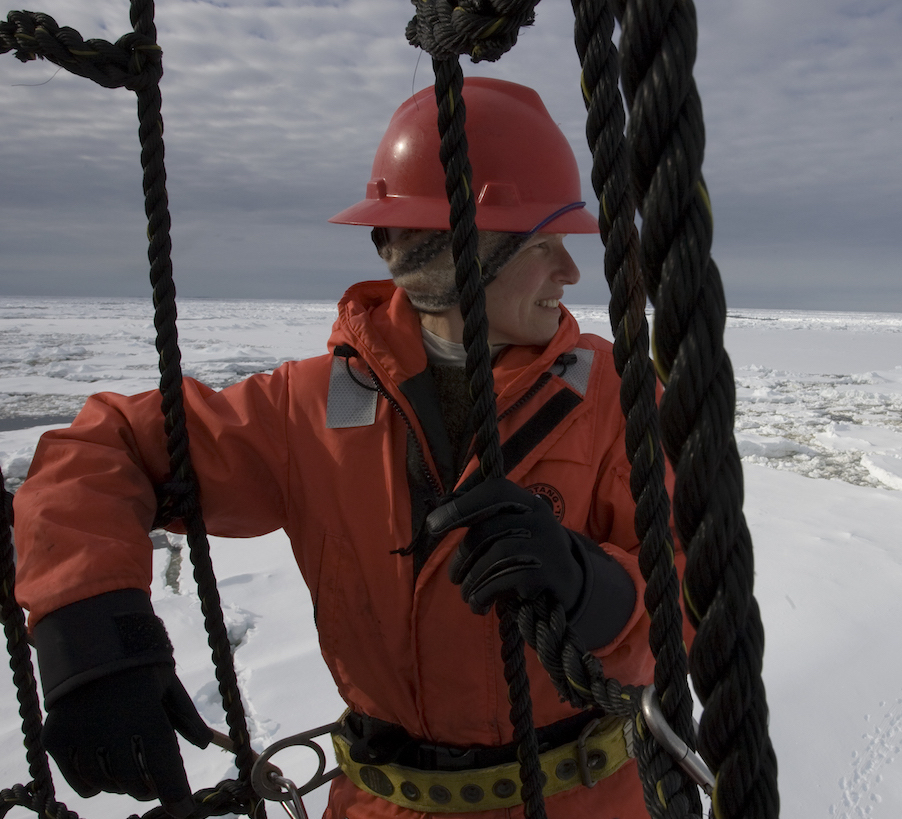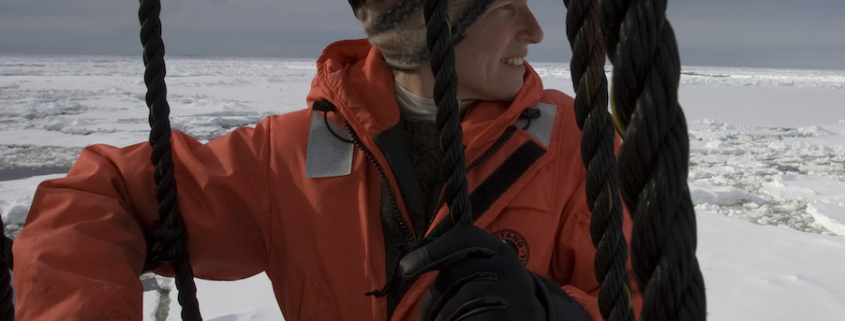Sharon Stammerjohn
Polar Scientist in the Spotlight
Learn about all sorts of careers that polar scientists have as we explore their different research areas through the featured Polar Scientist of the Month.
Sharon Stammerjohn
Polar oceanographer, University of Colorado BoulderWhat do you do?
For science: I go on research vessels to both the Antarctic and Arctic with a load of other scientists, graduate students, and early career scientists (and often-times with teachers and artists too!) to study those polar marine environments that are seasonally covered by sea ice. We are interested in how the physical environment (ocean, sea ice, wind, waves) is responding to our changing climate, and how in turn those changes affect the marine ecosystem (from very tiny bacteria and plants in the ocean to shrimp-like krill to seabirds, whales, and seals).
Outside of science: I love being outdoors and exploring the beauty of nature, whether when hiking, biking, camping, birdwatching, or simply by just sitting and listening. I would describe myself as being deeply curious about how everything on this planet is so deeply interconnected, and that every action we take does truly make a difference.

What is the best thing about your job?
Having the opportunity to go to these very remote places on our planet, to learn how they are changing to help better inform how we must manage our climate and earth’s resources, and to work with amazing colleagues, students, and the ship’s crew who all make the work possible.
What is the most important tool you use for research?
The primary tools that I use to study polar environments include instruments that we lower into the ocean to study its properties, as well as instruments mounted on the ship to study atmospheric and ocean surface properties while the ship is underway. When we walk on the frozen ocean to examine the properties of the seasonal sea ice, our tools can be quite simple, like drills for making holes in the ice or for extracting ice samples, and tape measures for verifying its thickness. But another very important tool that we use is satellite remote sensing which provides us images of the sea-ice covered ocean that help with both navigation and to better understand how sea-ice covered ocean varies from place to place and over time.
Why is what you do important?
Polar regions are very sensitive to climate change, meaning they often respond long before we might notice any changes near the places where we live. Therefore, studying polar regions can help us anticipate how the planet is changing and how we can better plan for those changes closer to home as well as better manage our planet as a whole.





